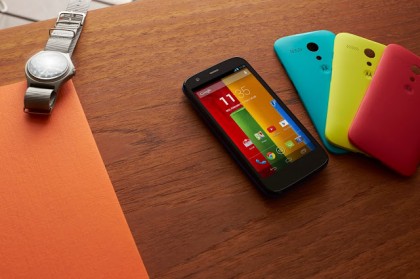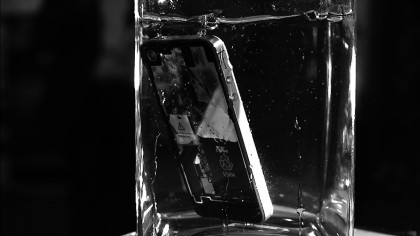Why aren't all our smartphones waterproof right now?
Not all phones can withstand the wet, but new technologies mean they could
Will the next iPhone be waterproof?
Most smartphone manufacturers we've spoken to have considered adding waterproof technology into their smartphones at some point in the future. This type of waterproofing won't be an afterthought, or something you'll have to consider as an additional expense, but will instead be baked into the manufacturing process.
TechRadar spoke to two companies leading the way in this field about where they see the market heading and how long before swimming pools will be freely littered with all manner of smartphones.
P2i
British company P2i isn't in the retail market and doesn't offer a service to protect your device post-purchase, but has instead decided to go down the route of being a part of the manufacturing process itself.
Its technology is similar to that used by Liquipel, but P2i's waterproofing method is being used by the likes of Timberland and Kangol for their waterproof clothing.
If you are familiar with some of Motorola's more recent devices including the Razr i and XOOM 2, then you'll have already seen some of P2i's splash-proof technology in action. It's also present on Motorola's latest handsets, the Moto X and Moto G.

Dr. Stephen Coulson, who invented the technology at Durham University in the early 2000s, explains further how it works. "The coating works to alter the surface layer chemistry of the device so that instead of encouraging water to wet out and stick, it simply beads up and rolls away." he told us.
"Now, instead of being pulled into the device through capillary action, any accidental splashes or spills onto the device are repelled away from the circuitry.
Sign up for breaking news, reviews, opinion, top tech deals, and more.
"This is extremely important in protecting devices from corrosion and electrical failure brought on by moisture, sweat or accidental liquid splashes and spills."
P2i's newer 'Dunkable' technology is an evolution of splash-proof, making for even better water resistance. Although we couldn't pin down any specifics, it's likely to be included in many phones, tablets and other gadgets very soon according to Coulson.
"Because the Dunkable technology will be ground breaking when it arrives, the brands we are working with are very keen to keep it confidential until they launch" Coulson said.
"Most of the top ten [smartphone manufacturers] have worked with us to some capacity before, and so it's simply a case of looking into a new project."
HzO
Back across the pond in the US, HzO offers its own take on a waterproofing nanotechnology called WaterBlock.
It's a similar process to that used by P2i that involves using a chemical vapour to coat the device, protecting the components against damage by water or any more potentially corrosive liquid without changing the look or feel of the handset.
Like P2i, HzO's technology is implemented at the manufacturing stage, and according to Marketing Manager Jared Matkin, that's where it plans to continue to focus its efforts rather than offering an aftermarket solution.

"We are working directly with OEM's/manufacturers to integrate our licensable technology into production lines so that when products come to market they already have our coating on them," he told us.
"I can say that our nano-coating protects against full submersion, and while we don't recommend people live an underwater existence with their WaterBlocked device, that protection in most normal, 'real world' scenarios will last the lifetime of the device."
HzO has been proudly showing off an iPhone at tradeshows with a see-through case that easily shows liquid flooding the device. It's tested it with coffee, fizzy drinks and other less than ideal contaminants, and claim that the test devices have continued to work normally despite being tested well beyond the real world scenarios that the average consumer would likely put their smartphone through.
No more watery graves
Whether you're after a waterproof phone, or want to do something to protect your existing handset, there's a variety of solutions out there. It looks certain that the future will be full of waterproof gadgets, thanks to the technologies being developed by P2i and HzO.
There's little needed to convince us consumers that it should be a default feature of any future smartphone, and of course manufacturers are striving for better device reliability to give us a longer lasting product.
It's a safe bet that by this time next year virtually every new smartphone will come bearing some form of the liquid-guarding technology. Dr. Coulson, CTO of P2i sees a big future in nanotechnologies and other protective coatings.
"This is just the beginning for invisible coatings on electronic devices. The future will see the likes of anti-scratch, anti-fingerprint and even antimicrobial coatings as standard – all applied at such a tiny scale that you won't even know it's there" he told us.
- 1
- 2
Current page: Waterproof phones - the future
Prev Page Waterproof phones - the options and the science